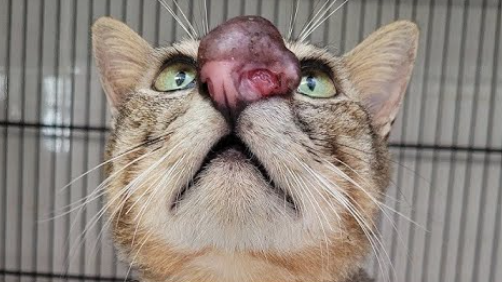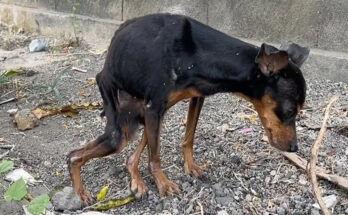It started with a strange lump on the nose of a stray cat that had been hanging around a quiet neighborhood for weeks. Residents had grown fond of the friendly feline, often leaving out food and water. But recently, the cat’s behavior changed—it was lethargic, constantly pawing at its nose, and had trouble breathing.
That’s when Sarah, a local animal lover and volunteer rescuer, decided it was time to take action. After some gentle coaxing and a bit of tuna, she managed to get the cat into a carrier and brought him straight to the vet.
What the vet discovered shocked everyone: a botfly larva had embedded itself deep inside the cat’s nasal cavity. Botflies, also known as Cuterebra, lay their eggs on animals, and the larvae burrow under the skin—sometimes even inside the nose or throat. It’s rare but dangerous, especially if left untreated.
The procedure had to be done carefully. The larva was alive and wriggling just under the surface, causing irritation and pain. Using precision tools, the vet made a small incision and slowly pulled the larva out. It was larger than expected—about an inch long, white, and grotesque. The room fell silent in awe and a little horror.
Once the botfly was removed, the cat—now affectionately named “Whiskers”—immediately began to breathe easier. His recovery was swift, and his personality returned to its curious, playful self within days.
Sarah decided to adopt Whiskers permanently, unable to part with the brave little cat she had helped save. She shared the story online, and it quickly went viral—partly because of the shocking nature of the parasite, but also due to the heartwarming ending.
This story serves as a reminder that even the smallest signs of discomfort in animals should never be ignored. One act of kindness—and one careful extraction—saved Whiskers from a painful fate.
Now, Whiskers enjoys a safe, loving home and plenty of nose scratches—free from botflies forever.



